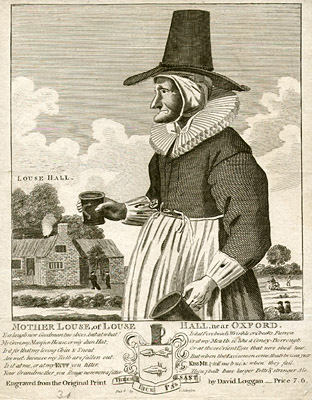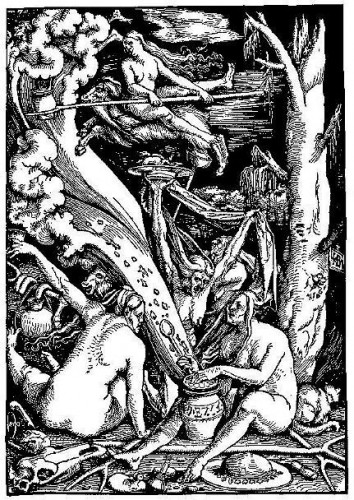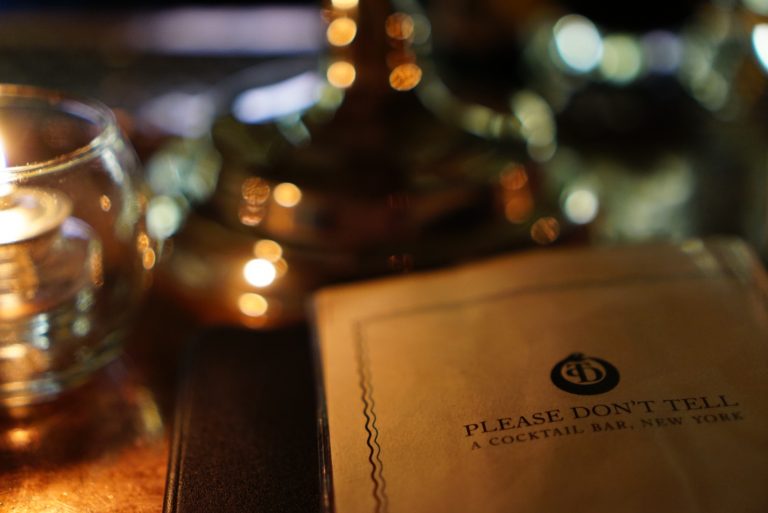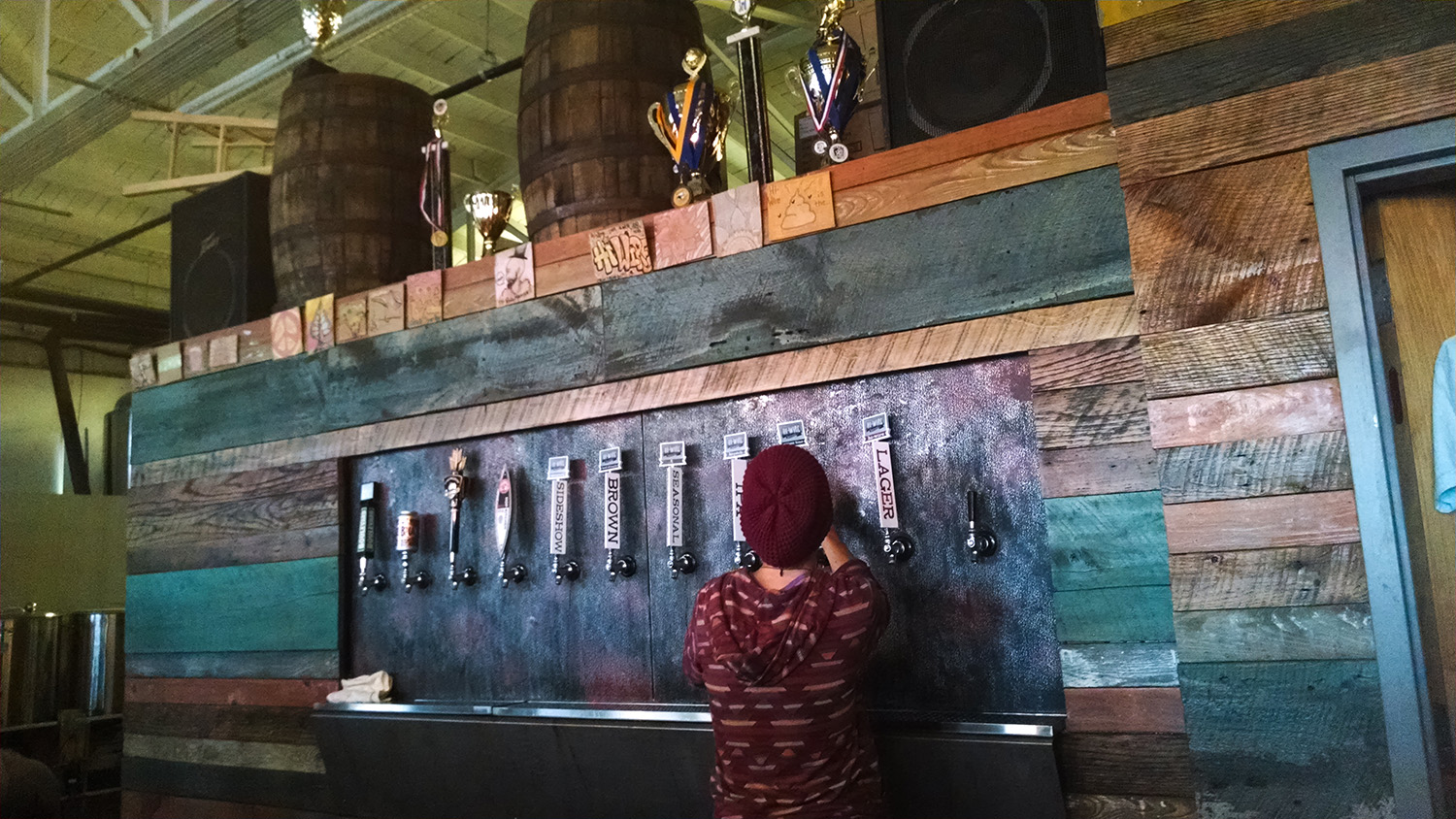The truth of women and beer: Witches
“Then put it again into the Cauldron, and boil it an hour or an hour and a half. Then put it into
a Woodden-vessel to cool, which will require near forty hours for a hogshead.”
-Scotch Ale from my Lady Holmbey
Echoing laughter fills the dark, candle-lit room and the smell of death and blood hang in a dense cloud that threatens the Inquisitor’s next victim. With another turn of the wheel, a slight pop produces not only a disjointed elbow but a name, a woman’s name, expelled from the ragged breaths left in the tortured body.
* * *
She donned her best wide brimmed hat, “shooed” the mice away from the bubbling pot and mumbled to herself about needing a better cat. Ambling out of the doorway, she grabbed her broom and her “star” and set them above the entrance before selecting the best of her potions and setting to the street for the promising business of a busy market. Little did she know that she would be spending that night in the dank, moldy and rat infested cell under the charge of witchcraft.
This image of a broom wielding sorceress with a tall hat, black cat and bubbling cauldron overflowing with potion has been synonymous with witches for the last century and probably longer. The truth of the woman in this story takes us down a much different path altogether, and we are set to lead the way.

During the 15th and 16th centuries, the Spanish Inquisition was in full swing. Decreed with the purpose of stopping the Judaizing that was taking place as well as expelling the Jews from Spain, King Ferdinan II and Queen Isabella started one of the most deadly Inquisitions in history. It was a dark era for the world, especially for women and brewing. Up until this time, brewing (as we have learned) was a domestic science reserved for the wife, the woman or the mother. It was a trade passed through history by word-of-mouth or written accounts matrilineally without much consideration from the male persuasion that is, until the 15th/16th century.
“Commercial brewing was very widespread, especially in the countryside.” Judith Bennett wrote in her book Ale, Beer, and Brewsters in England. “In Brigstock before the plague, more than 300 women — about one-third of the women who lived on the manor — brewed ale for sale. In Alrewas (Staffordshire) during the 1330s and 1340s, between 52 and 76 brewers sold ale each year (in a village with about 120 households). In Wakefield (Yorkshire) between 1348 and 1350, 185 women — accounting for almost one-third of all women — brewed for sale.”
So how did the brewster’s image become likened to our ideas of a witch? Well, let’s start with the hat. Back in the height (literally) of women’s fashion, a lady could be found with many forms of head coverings but most favorably either a henin or a shortened, brimmed version of the same hat. This hat, which could be two feet tall, stood out on crowded streets, allowing for a certain level of recognition. It is believed that because of this simple marketing scheme, brewsters (by this time refered to as “alewifes” and “beer witch” alike) we able to sell their brews in the streets and at markets more easily.

To promote sales, brewsters would often place a broom (symbol of domestic trade) in front of their home or tavern. Even in modern day Peru, a stick adorned with a red bouquet or bag is placed outside the doorway to indicate their ale is ready for consumption. Another symbol found outside the door was a talisman resembling the Star of David. The star was used to convey the purity of their beer. Remember, it was the middle ages: plagues were a constant concern. The six points of the star are said to symbolize the most important parts of brewing: hops, grain, malt, yeast, water and of course, the brewster (brewer).
This talisman of the brewster, the Star, likely proved to be the yeast that overboiled the cauldron (or kettle as it were). With such a strong link to Judaism, it is unlikely that the Catholic church could resist finally forcing its way into the brewing trade which had been growing with the population. Finally, men had their way into the craft! With money to be made and control to be had, the church began its long and complete reconstruction of the beer trade.
“It took the Church a long time to persuade society that women were inclined toward evil witchcraft and devil-worship. asserts Helen Ellersbe in her book, “Dark Side of Christian History”. “Reversing its policy of denying the existence of witches, in the thirteenth century the Church began depicting the witch as a slave of the devil. No longer was she to be associated with an older pagan tradition. No longer was the witch to be thought of as benevolent healer, teacher, wise woman, or one who accessed divine power.”
The Inquisition was a point on which much of history hinges and beer-making was no exception. After men, and consequently the Church, forced their way into the beer trade, they began to control everything: hours of operation, recipes, profits and most importantly, who could make the beer. Because the Church was so distraught over women having almost exclusive skill in brewing and healing, much had to change and over the years of the Inquisitions, brewing and healing trades became exclusively male, a change that would impact the world through the current age.

Helen Ellerbe, author of “Dark Side of Christian History” stated,“As a byproduct of the witch hunts, the field of medicine transferred to exclusively male hands and the Western herbal tradition was largely destroyed.” Helen’s research emphasized the mass removal of women in major commercial trades that became governed by men and the Church as a result of the Spanish Inquisition.
It was during this time that commercial trades (especially brewing) were starting to take hold and the expectation was for beer-making to be a flourishing and wealthy business. Brewsters, it seemed, were facing death, threats and ultimately the end of their reign. Oddly enough (or maybe not) few men were tried or suspected of witchcraft. It would seem the church took little issue with brewing as it thrived in the monasteries and other spiritual institutions. *ahem*
With our journey through history long from over, we continue to be amazed at the strength and perseverance of the women involved in craft brewing.
Check back for upcoming stories in the series as we continue working towards the modern era. The entire series can be found here. To keep up to date on new parts to the unfolding history of the brewster follow us on Twitter and Instagram or like our page on Facebook.







